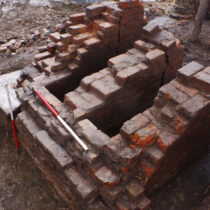Attempts have been made in recent years to illuminate aspects of the everyday life and art in Byzantium. However, the scholar faces a serious problem in the relevant research, due to the tack of direct written sources, since the traditions, institutions and customs of the people liv¬ing in urban centers or in the country are disseminated orally, therefore they have not been recorded or studied by historians. The reconstruction of dance and of the status of female dancers in Byzantium is a difficult undertaking. Nevertheless, the absence of direct sources is counterbalanced by the information drawn from the works of art and from indirect references that are always examined in relation to the historical period lo which they belong. Thus, it has been established that dance, interwoven with the ancient Greek tradition, is originally performed in theatres and is later incorporated in official ceremonies, taking place in the Hippodrome and in the Great Palace, in the matrimonial rites of all social classes as well as in popular celebrations, where it appears in the form of folk religious dance. Dance, being at the beginning a more or less individual action, with intense motion and strong twists of the torso, is progressively transformed to a group, calm and decent performance, where the female dancers are linked together by holding each others wrist or shoulder. Finally, the status of the dancer in Byzantine society changes. As time passes the professional dancers are not portrayed any more, while the continuously diminishing opposition of the Church against dance allows simple, everyday women to dance just for pleasure and sheer entertainment.
The Female Dance in Byzantine and Post-Byzantine Iconography. A First Approach
28 Aug 2012
by Archaeology Newsroom
- A
- A
- A

